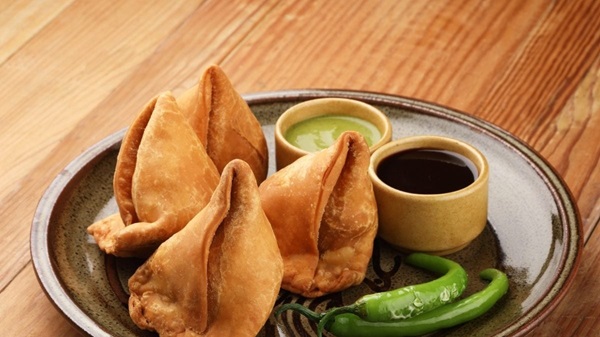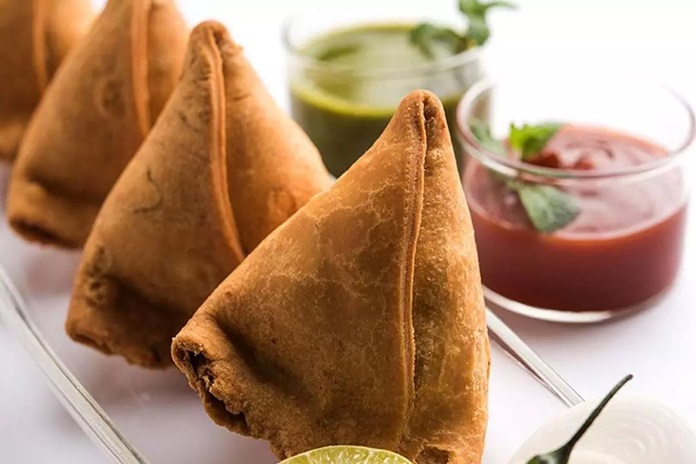World Samosa Day is on September 5 every year, and we can’t wait to enjoy this tasty snack. Samosas are fried and shaped like pyramids, filled with onions, potatoes, cheese, peas, and more. They are very popular in India, Egypt, South Africa, and the Middle East. Usually eaten as appetizers, samosa lovers can enjoy them as a three-course meal. World Samosa Day is a day of celebration.
History of World Samosa Day
Contrary to common belief, samosas did not start in India, even though they are very popular there. They originated in the Middle East before the 10th century. Traders brought them to India around the 13th and 14th centuries.
Today, samosas are so beloved in India that you can find them everywhere, from homes and fancy restaurants to roadside vendors.
The samosa is mentioned in 10th-century culinary literature. Many medieval Persian texts refer to ‘sanbosag,’ an early version of the samosa and a relative of the Persian pyramidal pastry ‘samsa.’ Historical records also mention ‘sambusak,’ ‘sabusaq,’ and ‘sanbusaj,’ as small, mince-filled triangles eaten by traveling merchants around campfires and carried in saddlebags as snacks for long journeys.
These merchants traveled from Central Asia to North Africa, East Asia, and South Asia, spreading samosas to these regions.
In India, samosas were introduced by Middle Eastern chefs who migrated for work during the Delhi Sultanate rule.
They quickly became a royal snack. When the medieval Moroccan traveler, Ibn Batuta, visited India in the 14th century, he documented banquets at the court of Muhammad bin Tughlaq, where ‘sambusak’ — triangular pastries filled with mince, peas, pistachios, and almonds — were served to guests. Since then, there have been numerous accounts of people enjoying this historic treat.
| 9th Century (The Gem of Akbar) | Abul Fazi, one of the nine gems of Akbar’s court, mentions that Mughal Emperors relish samosas. |
| 10th Century (Persian Texts Mention ‘Sanbosag’) | Many medieval Persian texts mention ‘Sanbosag,’ which is an early relative of the samosa. |
| 14th Century (Samosas Reach India) | Ibn Batuta, the medieval Moroccan traveler, mentions samosas being served to guests of Muhammad bin Tughlaq. |
| 1300 (Sufi Scholar Praises Samosa) | Amir Khusaru, a Sufi scholar and musician, writes about samosas being enjoyed by the Indian royal court. |
5 Interesting Facts About Samosa Day
- It is connected to pyramids: The traditional samosa shape resembles a pyramid and is named after the pyramids of the Middle East.
- Empanadas were inspired by samosas: The Spanish, after tasting samosas, adapted the recipe and created empanadas.
- Vegetable samosas are the most common: Vegetable samosas are the most popular type, while meat samosas are enjoyed in fewer countries.
- It was not vegetarian at first: The earliest samosas were made with meat, pistachios, and onions.
- It comes in various shapes: In Turkish regions, samosas are found in both half-moon shapes and triangles.
Global Popularity
The samosa’s journey from the Persian Empire to the Indian subcontinent and beyond highlights its global appeal. Today, samosas are enjoyed in various forms across the world.
In the United Kingdom, they are a popular snack in Indian restaurants and takeaways. In Canada and the United States, samosas are commonly found in Indian and Pakistani eateries, as well as at farmers’ markets and food festivals.

In South Africa, samosas, known as “samoosas,” are a popular street food, often filled with spicy meat or vegetable fillings. In the Middle East, particularly in Lebanon and Syria, “sambousek” is a similar pastry filled with meat, cheese, or spinach.
The adaptability of the samosa to different culinary traditions and ingredients has ensured its place in global cuisine. Whether enjoyed as a street food, a party appetizer, or a gourmet dish, the samosa continues to win hearts and taste buds around the world.
World Samosa Day Celebrations
World Samosa Day is an opportunity for food enthusiasts to come together and celebrate this iconic snack. Across the globe, various events and activities mark the occasion. Here are some ways people celebrate World Samosa Day:
Samosa Cook-Offs: Cooking competitions where participants showcase their samosa-making skills, experimenting with different fillings and techniques.
Food Festivals: Many cities host food festivals featuring samosas from various regions and cultures. These festivals often include live cooking demonstrations, tastings, and workshops.
Community Gatherings: Families and friends come together to make and enjoy samosas. It’s a fun activity that brings people closer and allows them to share their culinary traditions.
Restaurant Specials: Restaurants and cafes offer special samosa menus or discounts on samosa dishes. Some may even introduce limited-edition samosas with unique fillings.
Conclusion
World Samosa Day is more than just a celebration of a beloved snack; it is a testament to the rich history and cultural significance of the samosa. Originating in the Middle East before the 10th century, the samosa has traveled through time and across continents, evolving into various forms enjoyed globally.
From royal courts in medieval India to street vendors in South Africa, this triangular pastry has captivated taste buds everywhere. Celebrations on September 5 include samosa cook-offs, food festivals, community gatherings, and special restaurant offerings, highlighting the samosa’s versatility and universal appeal. As we indulge in this tasty treat, we not only savor its flavors but also honor its storied journey and enduring legacy in the world of culinary delights.
Frequently Ask Question
1. When is World Samosa Day celebrated?
World Samosa Day is celebrated on September 5 every year.
2. What is a samosa?
A samosa is a fried, pyramid-shaped pastry filled with various ingredients such as onions, potatoes, cheese, peas, and sometimes meat. It is popular as an appetizer but can be enjoyed as a main course as well.
3. Where did samosas originate?
Contrary to popular belief, samosas originated in the Middle East before the 10th century. They were brought to India by traders around the 13th and 14th centuries.
4. How did samosas become popular in India?
Samosas were introduced to India by Middle Eastern chefs during the Delhi Sultanate rule. They quickly became a royal snack, with historical records documenting their presence at royal banquets.
5. Are samosas only popular in India?
No, samosas are popular worldwide. They are enjoyed in countries such as Egypt, South Africa, and throughout the Middle East. In the UK, Canada, the US, and South Africa, samosas are also widely enjoyed.
You may also like to read, National Toasted Marshmallow Day – August 30, 2024
